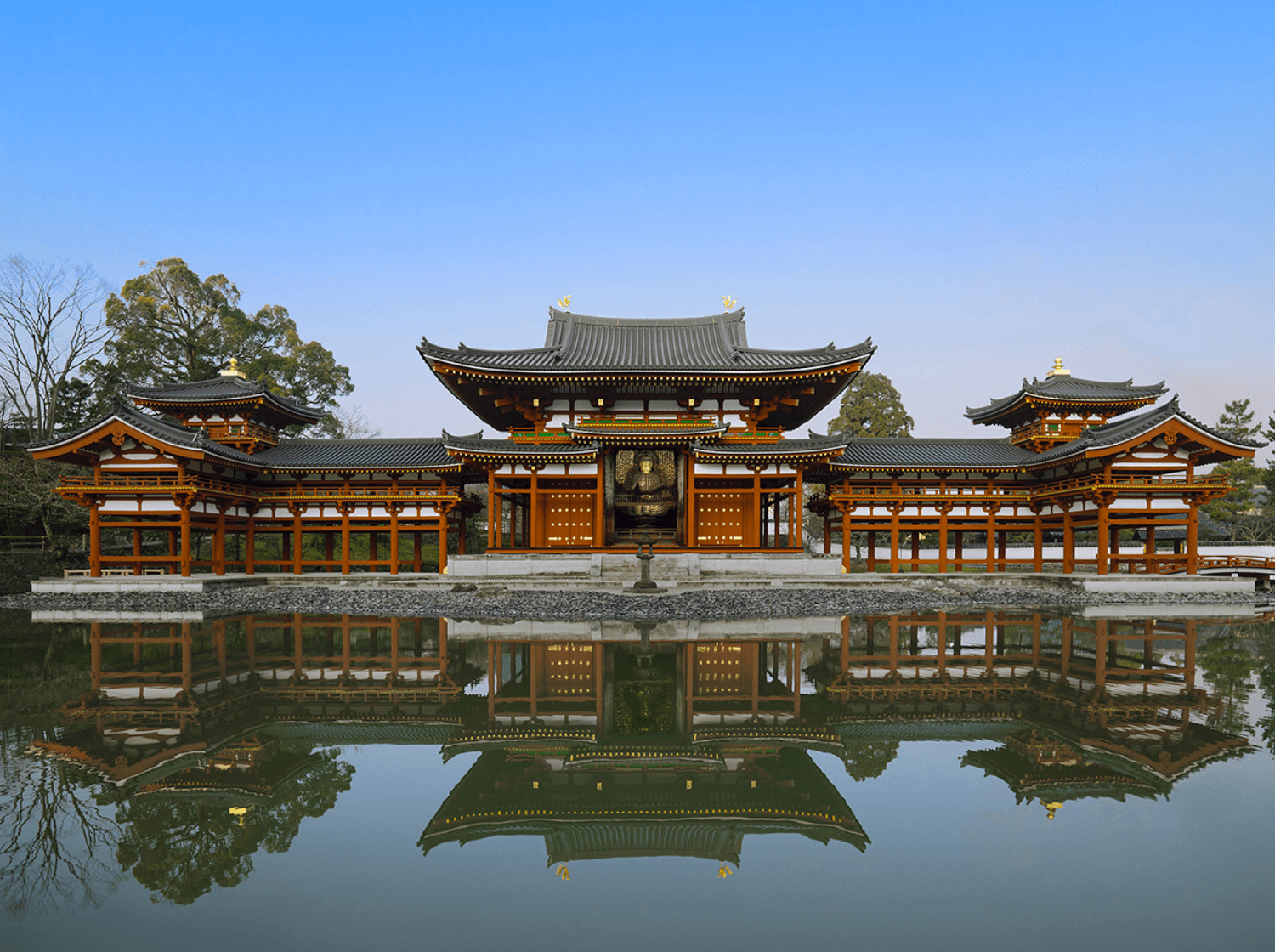Phoenix Hall

The Phoenix Hall is one of Japan’s most iconic structures, and the largest example of Heian period (794–1184) architecture still standing. It has endured nearly a millennium of wear and tear and now stands as a singular monument to what was once Byodoin’s extensive temple complex. The Japanese government designated the building a National Treasure in 1951, and its image has decorated the 10-yen coin ever since.
The building’s name comes in part from the two gilt bronze phoenixes perched on the tile roof, and in part from the hall’s unique floor plan: an elevated corridor extends from either side of the central hall; another stretches outwards from the back of the building’s sanctuary, giving the structure the shape of a bird with outstretched wings. The corridors are primarily decorative; the floors are elevated several meters off the ground, and the ceilings are so low that an adult must stoop to move along them.
Aristocrat Fujiwara no Yorimichi (992–1074) created the hall in 1053 as an evocation of the Pure Land (Jodo) of Amida (Sk. Amitabha) Buddha, a celestial realm believed to exist far to the west. The building can sometimes seem to hover in the view of the observer, an illusion created by its soaring eaves and its reflection on the adjoining pond. The hall and the Amida Buddha inside it are said to catch the rays of the rising sun through the mountains to the east, adding to this visual effect.

